How To Get Rid Of Chest Acne At Home?
Don’t ignore chest acne!
On Sep 21, 2023 – 13 minutes read

Acne is a common skin concern that can affect not only the face but also other areas of the body, including the chest. Chest acne can be particularly bothersome, but the good news is that there are effective ways to treat and prevent it. In this comprehensive guide, we will explore the causes of chest acne and how to identify it. For those looking for how to get rid of chest acne, we’ll provide various methods including quick remedies, tips for preventing future breakouts, and when you should seek professional help.
Why wait? Read on!
Understanding Chest Acne & How To Get Rid Of Chest Acne Fast?
Chest acne, also known as truncal acne, refers to the occurrence of acne breakouts on the chest area. It manifests as red, inflamed pimples, blackheads, or whiteheads. Chest acne shares similarities with facial acne, but it can be more stubborn due to differences in skin thickness and sebum production. In addition to chest acne, some individuals may also experience acne breakouts on their neck, which can be equally frustrating to deal with.
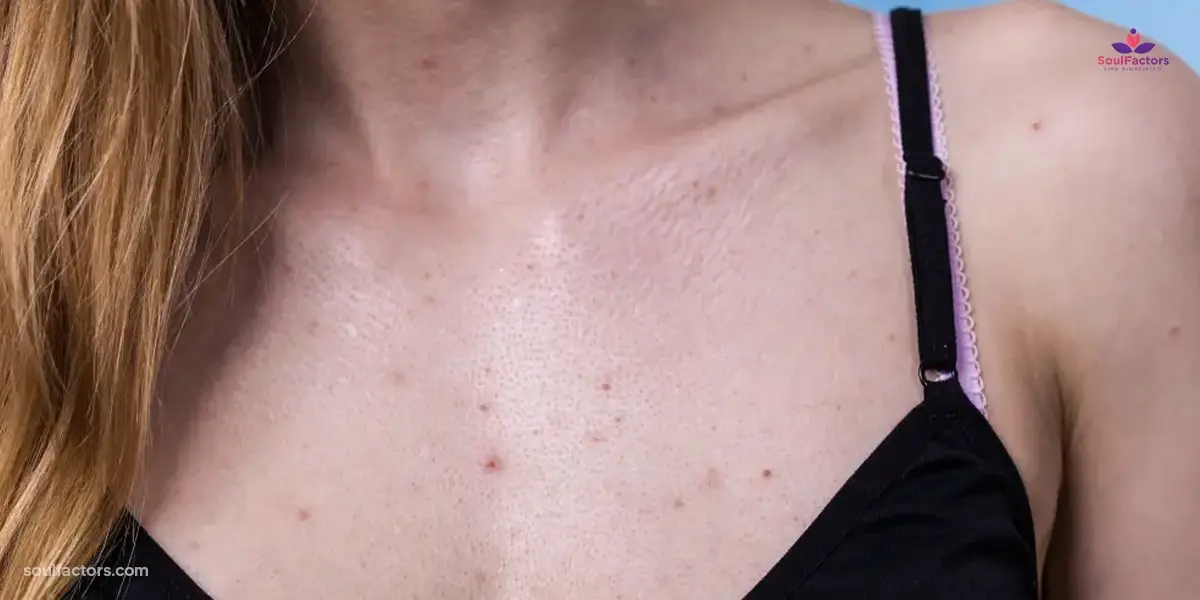
Its origins lie in the clogging of hair follicles, inflammation, and bacterial presence. This condition differs from other skin issues like heat rash or folliculitis in its characteristic appearance and underlying causes.
Causes Of Chest Acne
Common triggers for chest acne are hormonal fluctuations, often playing a significant role, especially in females (1). Hormonal changes during puberty, menstrual cycles, or the use of certain birth control methods can influence chest acne development.
Additionally, increased perspiration, particularly in humid conditions or during physical activity, can exacerbate chest acne. Moreover, the choice of skincare products can also be a contributing factor, as some products may contain pore-clogging ingredients that intensify the condition.
The primary factors contributing to chest acne include:
1. Clogged Hair Follicles
Much like facial acne, chest acne develops when hair follicles become clogged with dead skin cells, sebum (skin oil), and debris. This creates an environment where bacteria can thrive, leading to inflammation and acne lesions.
2. Bacterial Presence
Propionibacterium acnes, a bacterium commonly found on the skin’s surface, plays a pivotal role in acne development. When these bacteria multiply within clogged follicles, they trigger an inflammatory response, resulting in the characteristic redness and swelling associated with acne.
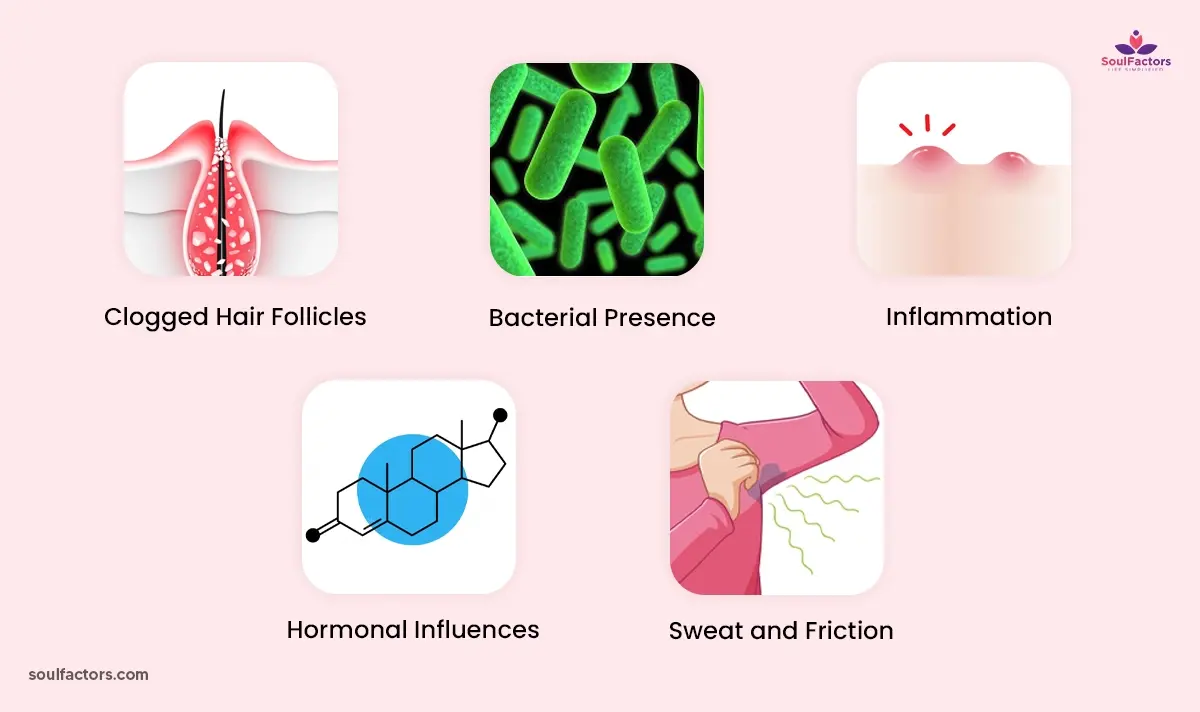
3. Inflammation
Inflammation is a hallmark of acne. It occurs in response to the presence of bacteria and the body’s attempt to clear the infection. Inflamed pimples and pustules are often painful and can leave behind scars if not treated properly (2).
4. Hormonal Influences
Hormonal fluctuations, particularly in the levels of androgens (male hormones present in both males and females), can contribute to chest acne. Androgens stimulate the sebaceous glands to produce more oil, which can lead to increased clogging of hair follicles.
5. Sweat And Friction
Perspiration can exacerbate chest acne. Sweat can mix with oils, dead skin cells, and bacteria, further blocking follicles.
Additionally, friction from tight clothing or backpack straps can irritate the skin, worsening existing acne or triggering new breakouts. Understanding these causes is pivotal in managing and preventing chest acne effectively.
Differentiating Chest Acne From Other Skin Conditions
Chest acne is often mistaken for other skin conditions such as heat rash or folliculitis. Understanding the key differences can help in proper diagnosis and treatment.
- Heat Rash: Heat rash typically presents as small, red bumps and occurs when sweat ducts become blocked. Unlike acne, it is not caused by clogged hair follicles or bacterial infections.
- Folliculitis: Folliculitis is an inflammation of hair follicles that can resemble acne. However, it is often caused by bacterial or fungal infections and may require different treatments.
- Fungal Infections: Fungal infections like tinea versicolor can appear as discolored patches on the skin. These are not typical acne lesions and should be treated accordingly.
Common Triggers For Chest Acne
Several factors can trigger or exacerbate chest acne. These include hormonal changes, excessive sweating, and the use of certain skin care products. Identifying these triggers is essential for effective management.
Hormonal Changes
Hormonal fluctuations are a significant trigger for chest acne. This is particularly relevant for females who may experience hormonal shifts during their menstrual cycles, pregnancy, or when using certain birth control methods. These hormonal changes can lead to increased sebum production and pore-clogging. PCOS acne is a similar condition caused by hormonal imbalance in women.
Excessive Sweating
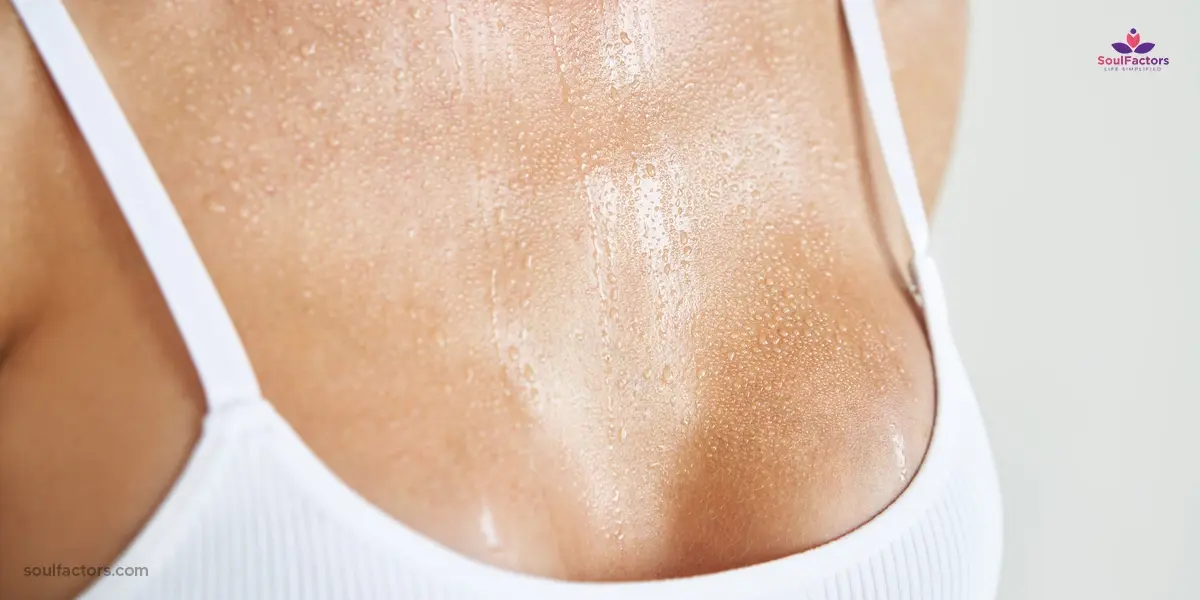
The chest area is prone to sweating, especially during physical activity or in hot and humid environments. Sweat can mix with skin oils and create a fertile environment for acne-causing bacteria. It is also necessary to control excessive sweating for women who are prone to it.
Skin Care Products
The choice of skincare products can play a pivotal role in chest acne development. Some products, especially those containing comedogenic (pore-clogging) ingredients, may worsen acne. It’s essential to select non-comedogenic and fragrance-free products.
Tight Clothing
Wearing tight-fitting clothing can trap sweat against the skin, leading to increased friction and irritation. This can exacerbate existing acne or trigger new breakouts.
Dietary Factors
While the direct link between diet and chest acne is not well-established, some individuals may find that certain foods, such as dairy or high-glycemic-index foods, can worsen their acne.
By understanding these common triggers and their role in chest acne development, individuals can take proactive steps to minimize their impact and work towards clearer, healthier chest skin.
How To Tell If You Have Chest Acne
Chest acne typically presents as red, inflamed pimples, blackheads, or whiteheads on the chest area. It can be itchy and uncomfortable.
If you have persistent breakouts in your chest, it’s essential to consult a dermatologist for a proper diagnosis. However, the signs above could imply that you have chest acne.
Nevertheless, other ways to tell if you have chest acne are outlined below:
Appearance Of Pimples
The most common sign of chest acne is the presence of pimples or acne lesions on the chest. These can include:
- Papules: Small, red, inflamed bumps on the skin’s surface.
- Pustules: Red bumps with a white or yellow center, often containing pus.
- Blackheads: Small, dark spots on the skin caused by clogged pores.
- Whiteheads: Similar to blackheads but covered with a thin layer of skin, giving them a white appearance.
Redness And Inflammation
Chest acne lesions are typically red and inflamed. The skin around the acne may appear redder than the surrounding areas.
Itchiness Or Discomfort
Chest acne can sometimes be accompanied by itching or discomfort, especially if the acne lesions are inflamed or irritated.
Persistence
Chest acne tends to persist over time. If you notice a consistent presence of acne lesions on your chest that do not go away or keep returning, it is likely chest acne.
Similar Appearance To Facial Acne
Chest acne lesions closely resemble facial acne in terms of appearance and characteristics.
It’s important to note that chest acne can vary in severity. Some individuals may experience only occasional breakouts, while others may have more persistent and severe cases.
If you suspect you have chest acne, it’s advisable to consult with a dermatologist or healthcare provider for a proper diagnosis and guidance on effective treatment options.
How To Get Rid Of Chest Acne
There are several remedies for those looking for how to get rid of chest acne. So, from general tips to applicable tips for females, here are the reputable ways to eliminate chest acne:
General Tips For Managing Chest Acne
Managing chest acne requires a combination of proper skin care practices, lifestyle adjustments, and sometimes the use of targeted treatments.
Here are some general tips for managing chest acne:
☑️ Maintain Good Hygiene
Gently cleanse the chest area daily using a mild, non-comedogenic (non-pore-clogging) cleanser. Avoid scrubbing too vigorously, as it can irritate the skin and worsen acne.

☑️ Choose The Right Skincare Products
Use non-comedogenic and fragrance-free skincare products to avoid clogging pores and irritating the skin. Look for products labeled “oil-free” or “acne-prone skin.”
☑️ Keep Bedding Clean
Change your bed sheets and pillowcases regularly to prevent the accumulation of sweat, oils, and bacteria that can transfer to your chest while sleeping. So, if you’re looking for how to get rid of chest acne fast, keep your bedding clean.
☑️ Stay Hydrated
Drinking enough water helps maintain overall skin health. Proper hydration can improve skin elasticity and promote a clearer complexion. It’s an ideal tip to practice, especially for those looking for how to get rid of chest acne naturally.
❌Don’t Pick or Squeeze Pimples
Resist the urge to pop or squeeze chest acne lesions. This can push bacteria deeper into the skin, increase inflammation, and lead to scarring.
❌Avoid Harsh Scrubs Or Exfoliants
Harsh physical scrubs or exfoliants can irritate the skin and exacerbate acne. Opt for gentle exfoliation with products containing salicylic acid or alpha hydroxy acids (AHAs). This tip is how to get rid of chest acne overnight.
If your chest acne persists or worsens despite following these general tips, consider seeking advice from a dermatologist.
They can provide personalized recommendations, including topical or oral treatments, to effectively address your specific case of chest acne.
General Advice Applicable To Females
For females dealing with chest acne, there are specific considerations due to hormonal influences that can impact the skin.
Here are some general advice and tips applicable to females searching for how to get rid of chest acne female:
1. Hormonal Management
Understand your menstrual cycle and hormonal fluctuations. Acne often worsens before and during menstruation due to increased levels of androgens. Adjust your skincare routine accordingly during these times.
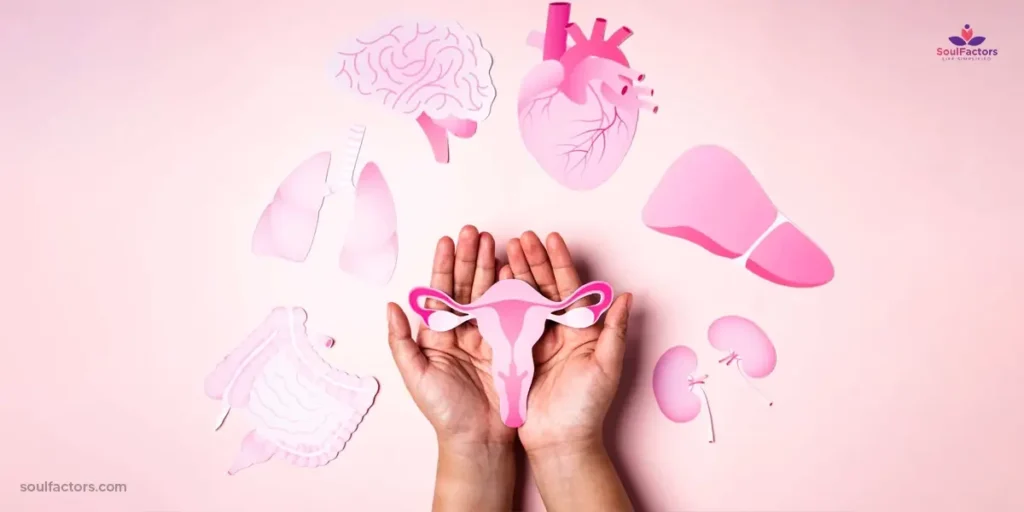
2. Use Hormonal Acne Treatments
Consider topical treatments that contain ingredients like benzoyl peroxide, salicylic acid, or retinoids. Retinol for acne would be a good place to start. These can be effective in managing hormonal acne and preventing breakouts in the chest.
3. Incorporate Hormone-Regulating Foods
Include foods rich in omega-3 fatty acids, like flaxseeds and walnuts, as they can help balance hormones. Additionally, consuming a diet rich in fruits, vegetables, and whole grains can aid in hormonal regulation.
4. Avoid Dairy And High-Glycemic Foods
Some females find that reducing dairy consumption and limiting high-glycemic foods like sugary snacks and white bread can improve their acne. Experiment with your diet to identify potential triggers.
5. Regular Dermatologist Check-ups
Schedule regular visits with a dermatologist, especially if you struggle with persistent or severe chest acne. They can provide expert guidance and recommend specific treatments tailored to your skin.
By following these gender-specific tips and integrating them into your daily routine, you can effectively manage chest acne as a female and potentially expedite the process of getting rid of chest acne. Consistency and patience are key to achieving clearer skin.
Daily Skincare Routine For Chest Acne Prevention
A daily skincare routine for chest acne prevention should be gentle, consistent, and tailored to your skin type.
Here are the best steps to include in your daily skincare routine to prevent chest acne:
- Use a mild, non-comedogenic (won’t clog pores) cleanser to wash your chest area in the morning and before bedtime.
- Exfoliate your chest area 1-2 times a week to remove dead skin cells that can contribute to clogged pores. Choose a gentle exfoliant containing salicylic acid or glycolic acid.
- Apply a lightweight, non-comedogenic moisturizer to keep your skin hydrated. This helps maintain the skin’s natural barrier and can prevent excessive oil production.
- If you have active acne or occasional breakouts, use a spot treatment containing benzoyl peroxide, salicylic acid, or sulfur on the affected areas.
- Always apply sunscreen to your chest area if it is exposed to the sun. UV rays can worsen acne and cause skin damage.
- Stay well-hydrated by drinking an adequate amount of water throughout the day. Proper hydration promotes healthy skin.
- Avoid wearing tight or restrictive clothing, as friction and sweating can exacerbate chest acne.
How To Get Rid Of Chest Acne Overnight (Quick Remedies)
Sometimes, you need quick relief from chest acne, especially before a special occasion. Here are some overnight remedies if you’re looking for female chest acne home remedies:
Spot Treatments
Apply a spot treatment with benzoyl peroxide or salicylic acid directly to the affected areas before bedtime. Be cautious not to overuse these treatments, as they can be drying.
Topical Over-The-Counter Products
Look for acne-fighting creams or gels containing these active ingredients. Apply a thin layer to the chest area before bedtime.
Natural Remedies
Some natural remedies, such as tea tree oil or aloe vera gel, can help reduce inflammation and kill acne-causing bacteria. Apply a small amount to the affected areas and leave it on overnight.
Female-Specific Chest Acne Home Remedies
Hormonal fluctuations can contribute to chest acne in females. Consider herbal remedies like evening primrose oil, which may help balance hormones. Consult with a healthcare provider before trying any natural remedies.
How To Get Rid Of Chest And Back Acne
Getting rid of chest and back acne, often referred to as “bacne,” can be a challenging but achievable goal. Addressing acne in these areas simultaneously is essential for achieving clear and healthy skin.
Acne on the chest and back frequently occurs together due to shared causes and similar skin characteristics. These areas have a high concentration of sebaceous (oil) glands and hair follicles, making them susceptible to acne development. The causes of chest and back acne are largely similar to those of facial acne and include:
- Clogged Pores
- Bacterial Infection
- Hormonal Factors
- Excessive Sweating
- Tight Clothing
To effectively manage chest and back acne, implement prevention strategies like proper hygiene, exfoliation, moisturizing, spot treatment, applying sunscreen, and wearing clean clothing. Managing acne in multiple areas may take time. Consistency in your skincare routine is crucial for seeing improvements. If over-the-counter treatments and lifestyle adjustments do not yield results, consult a dermatologist.
By addressing chest and back acne with this comprehensive approach, you can effectively manage and reduce breakouts in these areas, achieving clearer and healthier skin.
Special Considerations For Female Chest Acne
Special considerations for female chest acne focus on understanding the impact of hormonal fluctuations on acne development in women. Key points to consider include:
👉 Female-Specific Factors and Hormonal Fluctuations
Hormonal changes, particularly during menstrual cycles, pregnancy, postpartum, and menopause, contribute to increased sebum production and make women more susceptible to chest acne (3).
👉 Managing Chest Acne During Menstrual Cycles
Adapt the skincare routine during menstrual cycles, emphasizing gentle cleansing and targeted spot treatments for acne-prone areas. Hydration remains crucial throughout the menstrual cycle.
👉 Birth Control Options And Impact On Acne
Certain oral contraceptives, containing specific combinations of hormones, can help regulate hormonal fluctuations and reduce acne in women. Consulting a healthcare provider is essential to select a suitable birth control method that aligns with both contraceptive needs and acne management goals.
👉 The Role of Hormones And Treatment Options
Androgens, notably present in both genders, significantly influence chest acne. Anti-androgen medications, topical treatments with hormonal agents, oral antibiotics, and isotretinoin may be prescribed to regulate sebum production and manage chest acne effectively, particularly in severe cases. Understanding these factors and seeking appropriate medical guidance allows for tailored treatments, addressing hormonal imbalances, and promoting clearer chest skin in females.
Seeking Professional Help
If over-the-counter products and home remedies don’t provide relief, consider consulting a dermatologist. They can prescribe stronger medications, such as topical antibiotics or oral medications, to manage chest acne effectively.
Tips For Preventing Future Chest Acne Breakouts
Preventing future breakouts is as crucial as treating existing ones. Follow these tips to keep chest acne at bay:
- Maintain a consistent skincare routine.
- Avoid picking or squeezing pimples, as it can lead to scarring and further breakouts.
- Consider non-comedogenic sunscreen to protect your chest from UV damage.
While there are many other tips for chest acne prevention, these are some go-to tips for those looking for how to get rid of chest acne in no time.
Conclusion
Chest acne can be frustrating, but with the right approach, it’s manageable. By understanding the causes, identifying the condition, and implementing effective treatments and prevention strategies, you can achieve clear and healthy skin on your chest.
Remember, consistency and patience are key, and if needed, don’t hesitate to seek professional guidance from a dermatologist to get the best results in your battle against chest acne.
FAQ
Here are the most commonly asked questions from individuals looking for how to get rid of chest acne from their body.
Acne on the chest is primarily caused by clogged hair follicles, bacteria, and inflammation. Hormonal fluctuations, excessive sweating, and skincare product usage can also contribute to chest acne.
It’s not recommended to pop chest acne, as it can lead to infection, and scarring, and worsen the condition. Instead, use proper skin care and treatment methods.
The key to getting rid of body acne, including chest acne, lies in maintaining proper hygiene, using non-comedogenic products, and consulting a dermatologist for appropriate treatment options. If you’re searching for how to get rid of chest acne fast, try these methods.
The best treatment for chest and back acne may vary from person to person. It often involves a combination of skincare routines, over-the-counter products, and, in some cases, prescription medications prescribed by a dermatologist.

Subscribe to Newsletter
Elevate your routine, stay on trend, and embrace a personalized beauty journey with our curated insights.

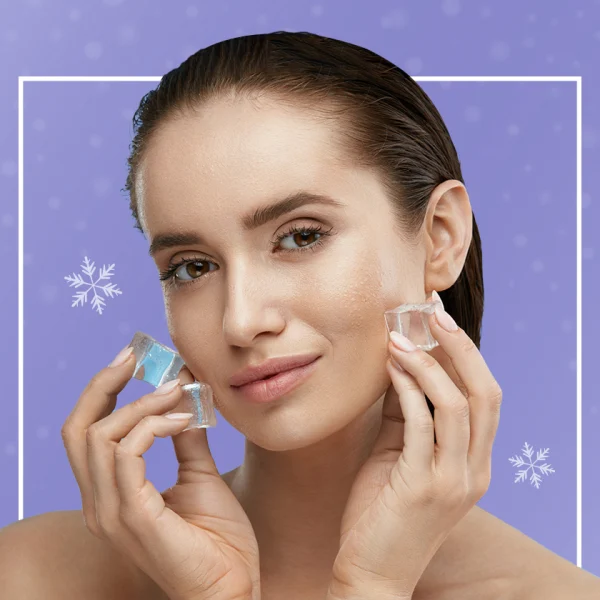
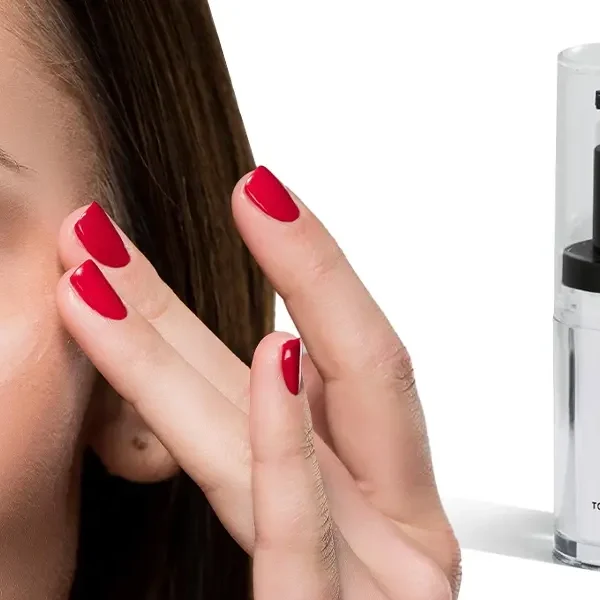

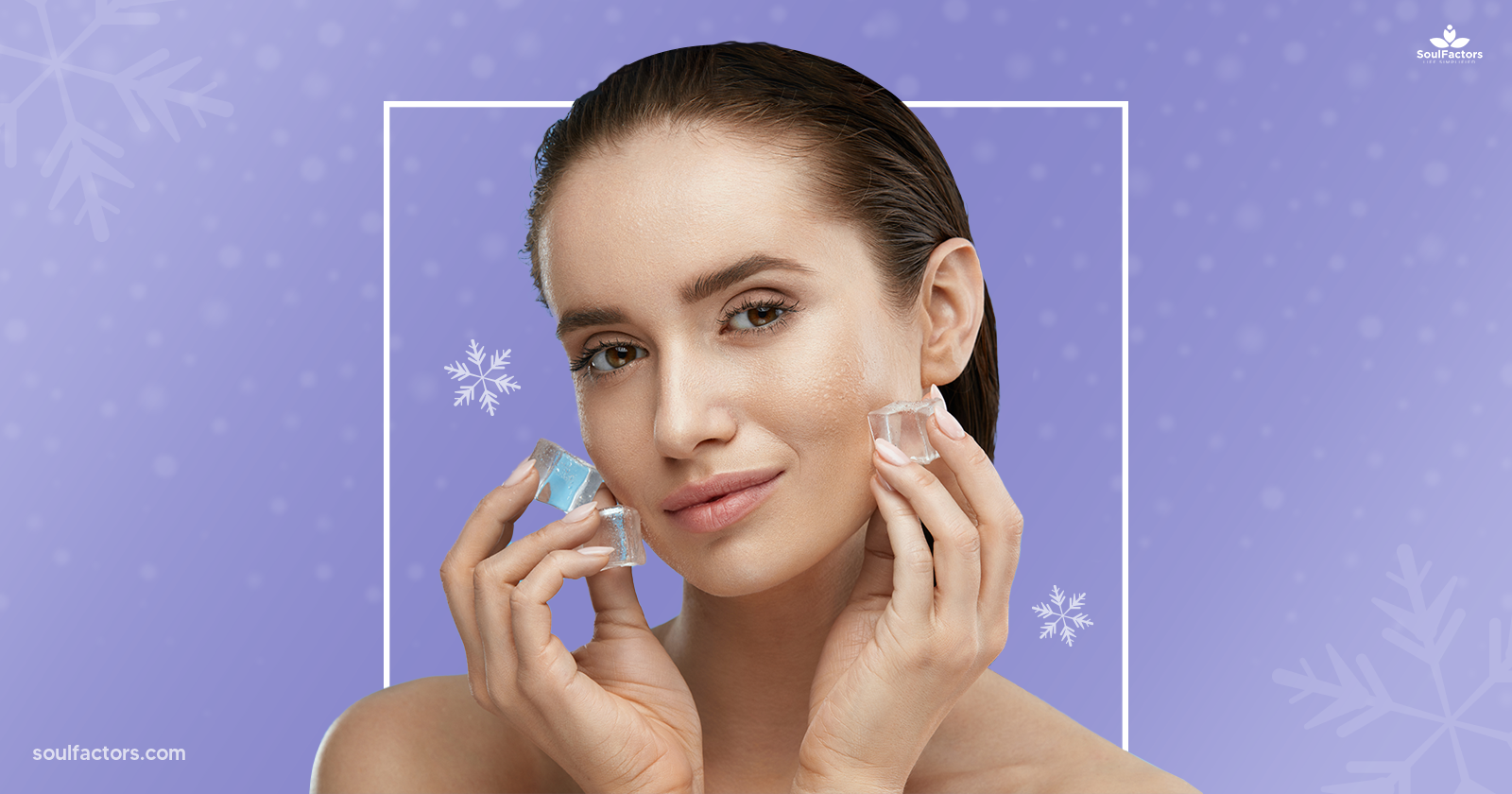
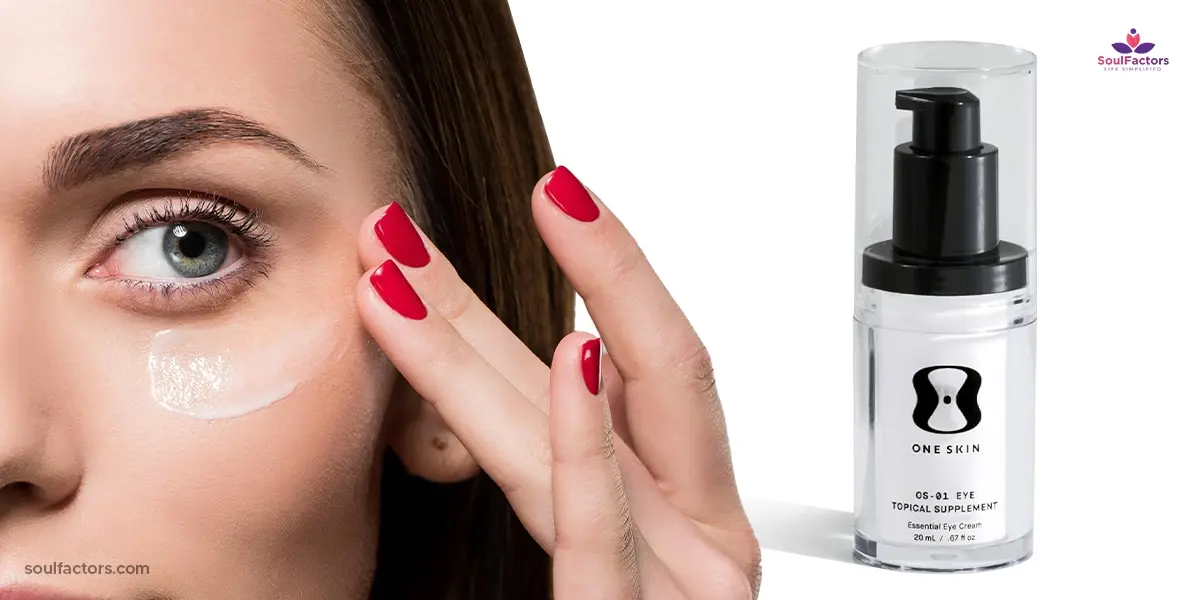
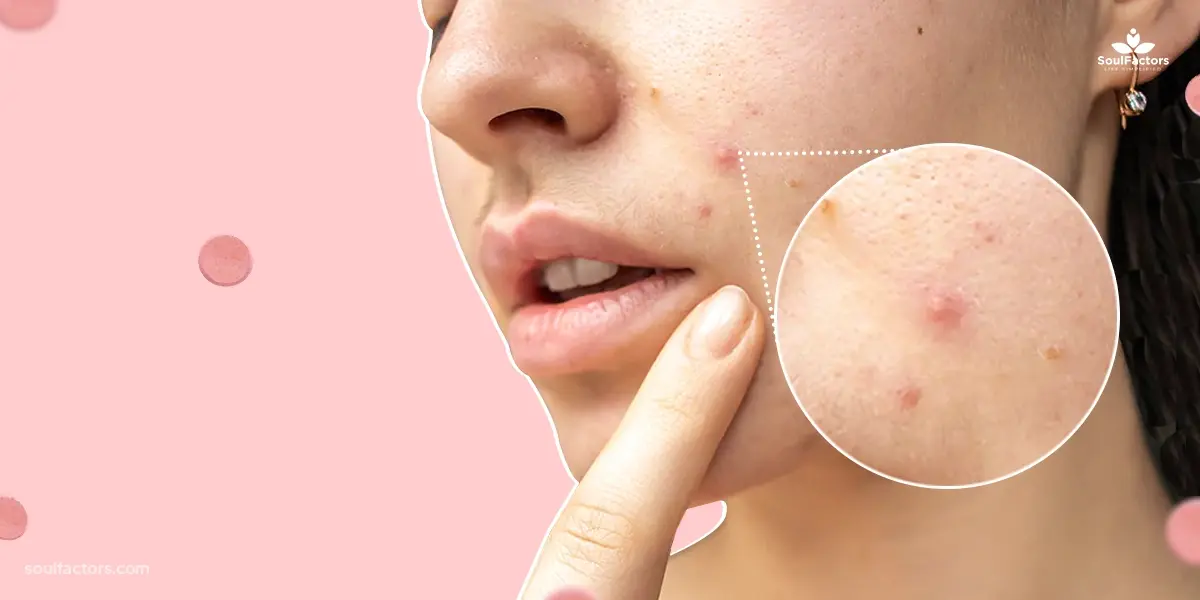
Write a Comment